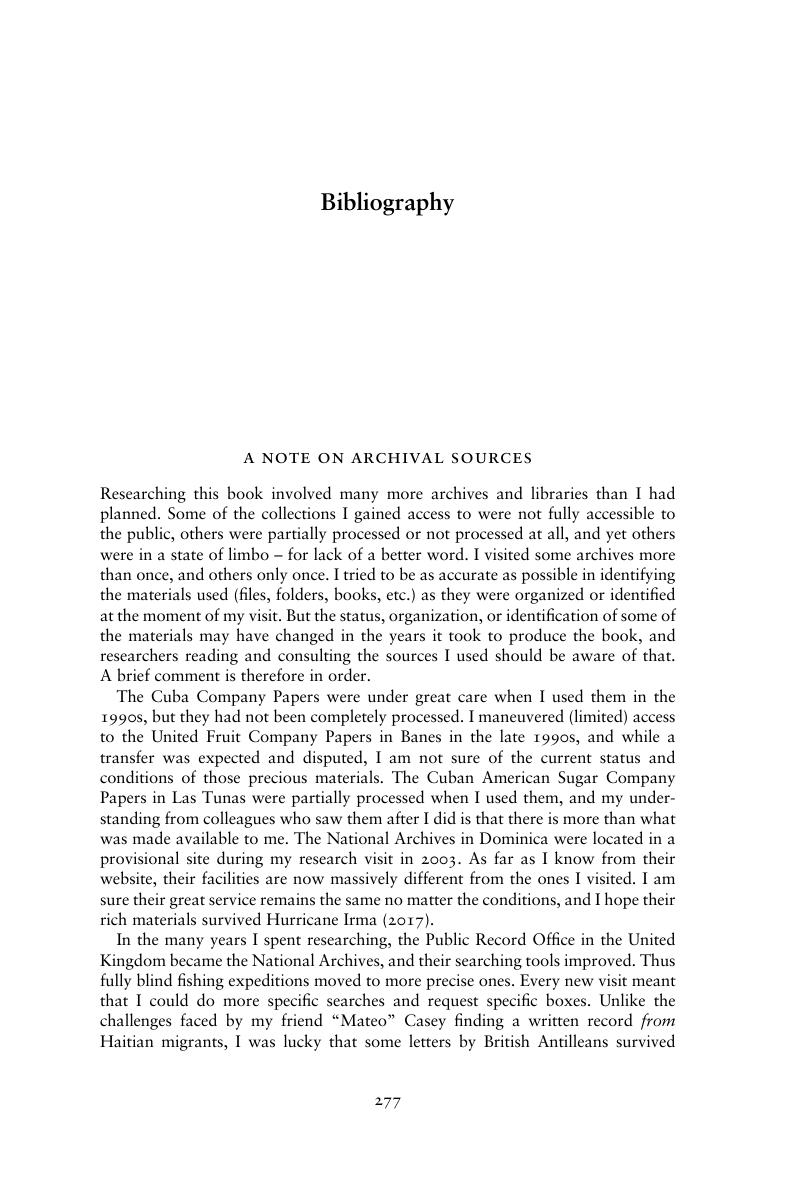 Black British Migrants in Cuba
Black British Migrants in Cuba Book contents
- Black British Migrants in Cuba
- Cambridge Studies on the African Diaspora
- Black British Migrants in Cuba
- Copyright page
- Dedication
- Contents
- Figures
- Acknowledgments
- Introduction
- 1 Historical Groundings
- 2 Black British Caribbean Migration to Cuba, 1898–1948
- 3 Migration, Racial Fears, and Violence, 1898–1917
- 4 The Limits of British Imperial Support
- 5 “Cuba Got Mash Up”
- 6 The Racial Politics of Migrant Labor
- 7 Transactions in Colonial Caribbean Governments and Consular Policy, 1925–1933
- 8 The Nationalization of Labor and Caribbean Workers, 1933–1938
- 9 “The Best and Most Permanent Solution”?
- 10 Race, Nation, and Empire
- Epilogue
- Bibliography
- Index
- References
Bibliography
Published online by Cambridge University Press: 15 October 2018
- Black British Migrants in Cuba
- Cambridge Studies on the African Diaspora
- Black British Migrants in Cuba
- Copyright page
- Dedication
- Contents
- Figures
- Acknowledgments
- Introduction
- 1 Historical Groundings
- 2 Black British Caribbean Migration to Cuba, 1898–1948
- 3 Migration, Racial Fears, and Violence, 1898–1917
- 4 The Limits of British Imperial Support
- 5 “Cuba Got Mash Up”
- 6 The Racial Politics of Migrant Labor
- 7 Transactions in Colonial Caribbean Governments and Consular Policy, 1925–1933
- 8 The Nationalization of Labor and Caribbean Workers, 1933–1938
- 9 “The Best and Most Permanent Solution”?
- 10 Race, Nation, and Empire
- Epilogue
- Bibliography
- Index
- References
Summary

- Type
- Chapter
- Information
- Black British Migrants in CubaRace, Labor, and Empire in the Twentieth-Century Caribbean, 1898–1948, pp. 277 - 300Publisher: Cambridge University PressPrint publication year: 2018


